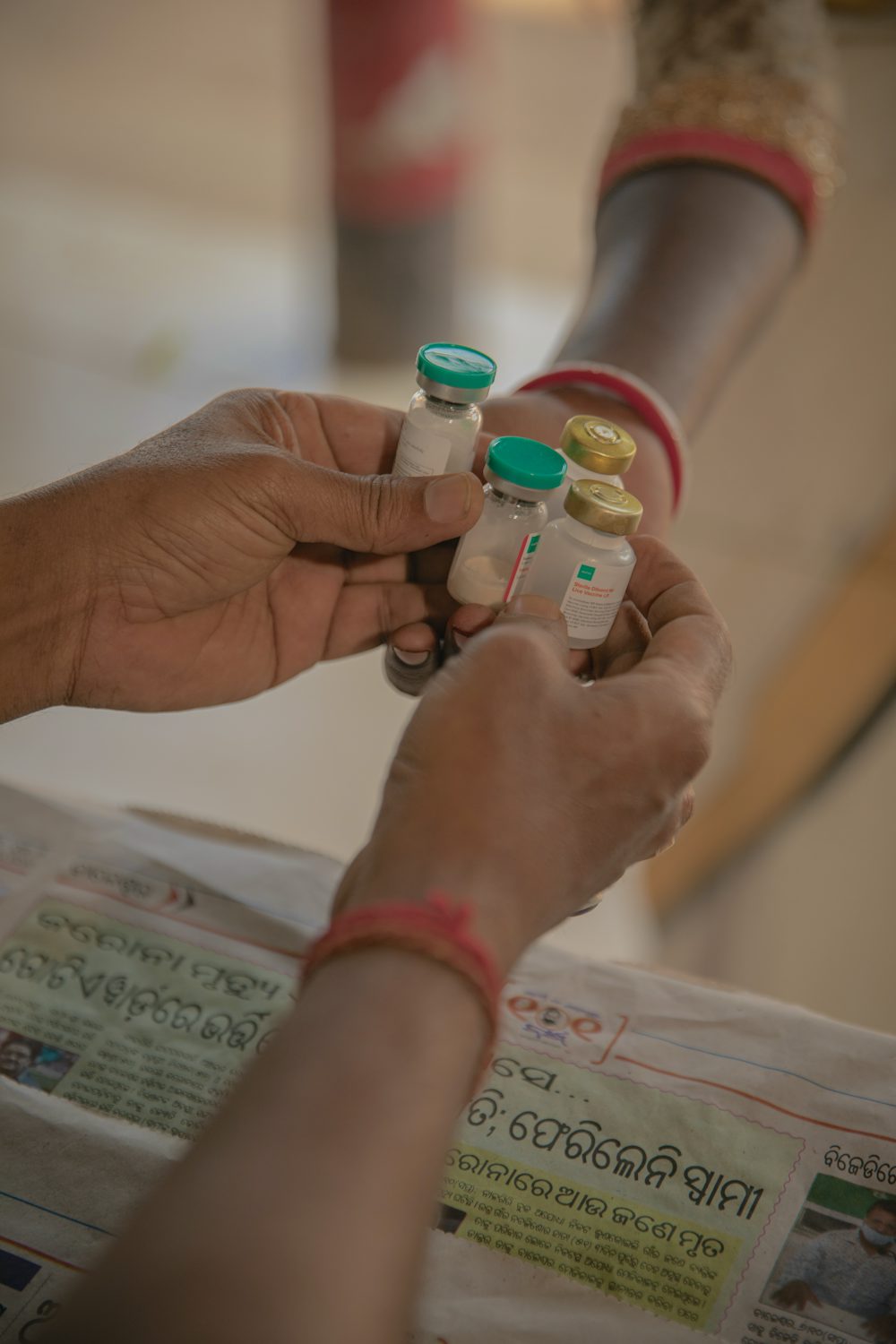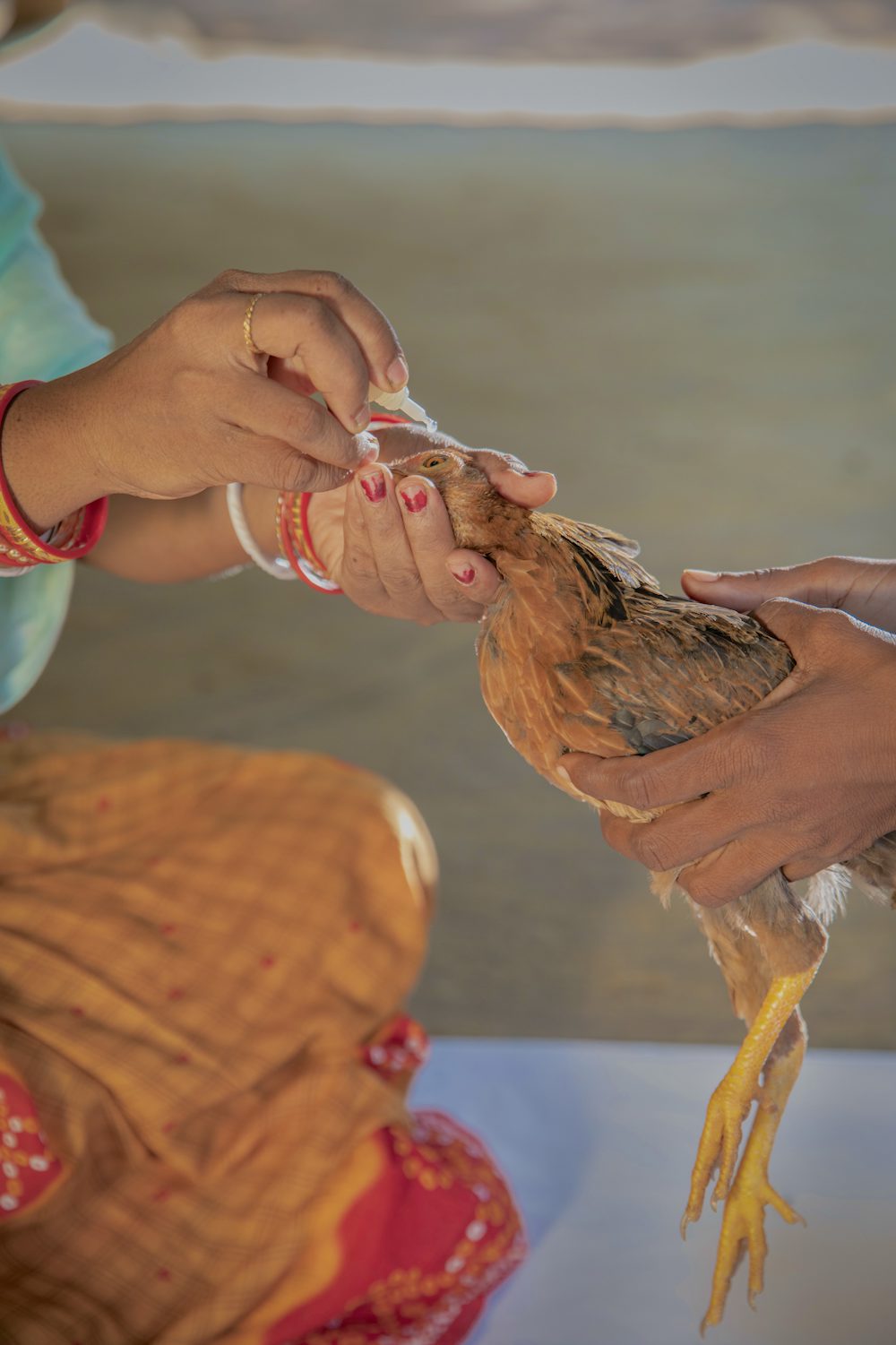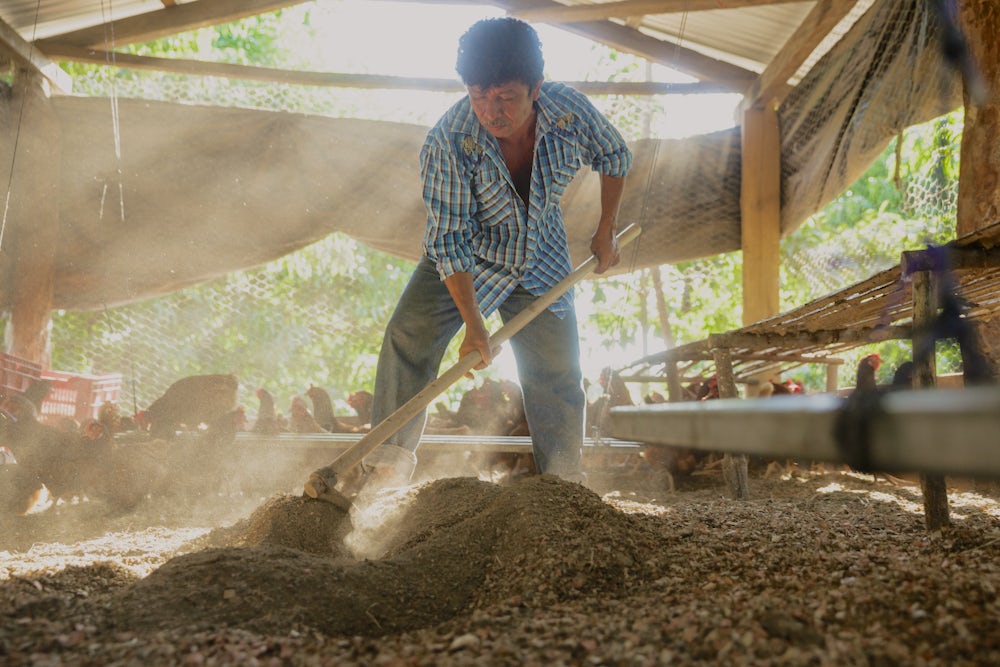Many of the diseases that have wrought havoc across the globe in the last 50 years are zoonotic. Defined as an infectious disease caused by a pathogen that passes from animal to human, it’s a phenomenon with outsized consequences: Over 60% of emerging infectious diseases in humans originate from animals. And after a year of stringent lockdowns, fluctuating COVID-19 case counts and face masks everywhere and all the time, the sobering reality of a contagious disease isn’t difficult to fathom.
For Heifer International, mitigating this threat of disease is of paramount importance. In the vast majority of our projects, smallholder farmers work in direct proximity to livestock like cows, pigs, goats and chickens. Recognizing the risk of animal-to-human disease transmission — and taking steps to avoid it — is foundational to our work.
“After the onset of COVID-19 globally, this has become more important,” said Dilip Bhandari, Heifer’s director of program and livestock technology. Defining standard safety protocols and guidelines to ensure both farmer and animal well-being is something “we have been emphasizing for several years, in all our projects associated with livestock and agriculture,” he said.

Preventing zoonotic diseases is crucial, Bhandari stressed, since infection would have dire consequences for project participants. Working in rural regions means health care services may be limited or prove challenging to reach, and the cost of treatment could be untenable for farmers already struggling to earn a living income. Risk of spread is high, too, because Heifer projects often engage entire communities, so one infected farmer could easily pass on a disease to others.
“If the livestock don’t get vaccinated, dewormed or managed well, then the zoonotic diseases that are prevalent in a specific locality can easily be transferred to the smallholder farmer,” said Bhandari. Heifer’s efforts to improve animal well-being are therefore varied and extensive, and include regular vaccinations, improved animal housing and nutrition, as well as utilizing appropriate technology.
Mass Vaccination and Deworming Campaigns
Mobilizing community members to provide affordable animal health services and technical training to local farmers is central to Heifer’s projects. Known as community agro-vet entrepreneurs, these service workers earn an income of their own while carrying out regular livestock vaccinations and deworming to combat diseases.

And their work has a significant impact. In Zambia, for example, since 2017, mortality rates in chickens from Newcastle disease have fallen from 60% to less than 5% thanks to vaccinations from Heifer-trained and -supported agro-vets. To date, 17,700 locally raised chickens in the country have benefitted from the vaccinations.
And in Malawi, just one community health worker can serve up to five villages of at least 380 households – providing parasite control and vaccinations to 3,150 dairy cows.
Across all countries where Heifer works, as of fall 2019, the number of agro-vets and other animal health workers trained by Heifer totals 3,461. And that number continues to grow.
Innovative and Well-Kept Animal Housing
Because pathogens proliferate where livestock are housed, Heifer trains all project participants in regular and thorough cleaning of animal enclosures. Adequate housing plays a key role in reducing the risk of disease contraction and protecting animals from predators and weather extremes.
In 2014, for example, Heifer Bangladesh supported poultry farmers in creating low-cost hatching pots for chickens. Made from inexpensive local materials including chopped straw, mud or cow dung, sand, and cement, these pots provided improved protection from parasites, which led to healthier, more productive flocks.
And in sun-baked Senegal, where temperatures can reach a scorching 118 F in April and May, the extreme heat contributes to chicken mortality rates – and where there are more dead animals, there is a heightened risk of disease. Similar low-cost poultry houses in Senegal reduced chickens’ direct sun exposure and improved air circulation around hatching trays. In 2018, Heifer helped farmers construct 1,100 new shelters and flock mortality dropped from 20% to 10%.

Improving Animal Nutrition
Nutrient-rich diets lead to healthier animals, healthier farmers and, in turn, a lower threat of infection. In all of Heifer's work, nutritious animal feed is central to project success.
When, for example, Heifer Honduras was faced with high incidences of disease caused by a lack of minerals in their dairy cattle’s diets, they developed an innovative solution: nutritional blocks.
Comprised of ingredients including ground corn, wheat bran, molasses and high-protein tree leaves, these blocks are designed to supply the micronutrients and minerals necessary to maintain cow health and stave off disease. Heifer staff taught farmers how to make the blocks in 103 in-country training facilities as a part of the Creating Micro-Enterprises with the Lenca Indigenous Families and the Leveraging Success project.
Harnessing Tech for Animal Health
There’s a lot involved in rearing animals safely and successfully — managing feeding times, cleaning enclosures, remembering key dates for gestation periods — and following best practices is vital for a healthy herd. Ensuring that information is easily accessible to smallholder farmers is front and center in Heifer’s work, and sometimes that means harnessing innovation in local technology.

By partnering with mobile tech company Farming Tech Solutions Limited, dairy farmers working with Heifer Kenya can now access real-time information on dairy cow husbandry, virtual trainings and critical services through the DigiCow Dairy app. From their phones, farmers can schedule on-demand, quality veterinary services and crowd source knowledge with other farmers in chat rooms.
Working toward eradicating poverty and hunger requires significant and sustained action to maintain animal and farmer health – work Heifer has been and will continue doing for a long time.
